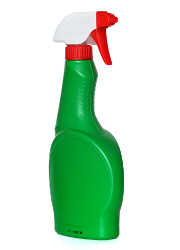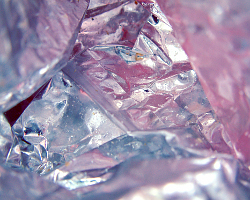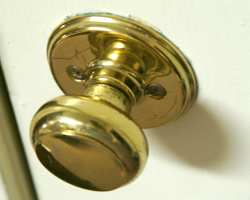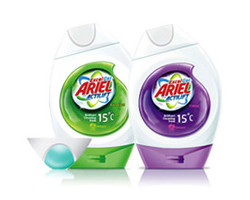How can I make sure a spray bottle is really clean before reusing it?
 We’ve had lots of suggestions over the years on how to reuse spray bottles from commercial cleaning products and the like but Nancy has just emailed a related question:
We’ve had lots of suggestions over the years on how to reuse spray bottles from commercial cleaning products and the like but Nancy has just emailed a related question:
First I want to comment that this is a fantastic website! Everyone in the world should be accessing it.
My question is this:I’m recycling plastic spray bottles to put pure, herbal cleaning products in. Is there a way to make sure these bottles are clean and free of chemical residue before I reuse them? A way to sanitize them first?
If I was going to use it for another cleaning product, I probably wouldn’t go overboard with cleaning it, just a washout with water or something, (unless the original product was very bleachy or something that would react with my new product) — I personally wouldn’t mind the chemical residue dregs for that first refill. If I was reusing the spray bottle for something else (eg, as a water spray for plants) though, then I’d probably wash it out more thoroughly (a few rinses of hot water) – but still probably not to a level that I’d class as “sanitizing” it so I don’t know what is needed to do that.
(My boyfriend) John uses baby bottle sterilising tablets when he’s cleaning plastic bottles for homebrew – and often has sterilising fluid leftover once his bottles are clean — it is, admittedly, a very weak bleach solution but is apparently stabilised so safer than normal bleach and doesn’t need rinsing off feeding utensils/bottles before they’re used. It seems like overkill to whip up a new batch of the fluid to clean out a cleaning products bottle but if you have it leftover from another use anyway…
Any other suggestions? How much effort do you make to clean out cleaning product bottles before reusing them?



 We’ve had an email from long-time commenter Melinda:
We’ve had an email from long-time commenter Melinda: We’ve had an email from Jill:
We’ve had an email from Jill: I’m possibly a bit late with this now (sorry Su!) but I just spotted this question and wondered if anyone had any advice/info/suggestions for further research.
I’m possibly a bit late with this now (sorry Su!) but I just spotted this question and wondered if anyone had any advice/info/suggestions for further research. Granny Cain emailed about Ariel Gel Dosing Devices:
Granny Cain emailed about Ariel Gel Dosing Devices:














